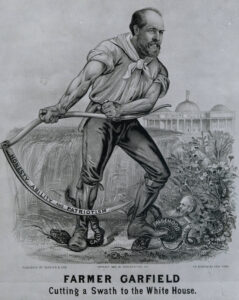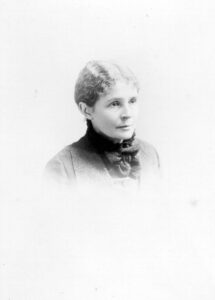James A. Garfield: Death of a President

James Abram Garfield was born on November 19, 1831, on the outskirts of Cleveland, Ohio; he was the last U.S. president born in a log cabin. His father died when Garfield was just two years old, but his mother Eliza continued to run their struggling farm. After working odd jobs to pay his way through Hiram College and Williams College, Garfield returned to Hiram as a professor and became the school’s president the following year. In 1858 Garfield married Lucretia Rudolph, another Hiram student; they had seven children, two of whom died in infancy.
Garfield opposed slavery, and in 1859 was elected to the Ohio legislature as a Republican. In 1862, he was elected to the U.S. House of Representatives. Garfield also served in the Union army during the Civil War, where he achieved the rank of major general.

Garfield had served nine consecutive terms in the House when the Ohio General Assembly elected him to the U.S. Senate in 1880. At the Republican presidential convention that year, Garfield’s speech nominating John Sherman for president was so impressive that Garfield won the nomination instead—on the thirty-sixth ballot. Although directly interacting with voters was considered unseemly at the time, Garfield conducted the first front porch presidential campaign; thousands of journalists and voters traveled to hear him speak at his Mentor, Ohio home. Fewer than 2,000 popular votes separated the candidates, but Garfield decisively won the electoral college and became the twentieth president of the United States (and the first sitting Congressman to be elected president).
Charles Guiteau was born in 1841 in Illinois. After an abusive upbringing and several failed careers, he decided that Garfield’s death was the only way to reunite existing Republican factions and gain the fame that Guiteau thought he deserved. He bought a gun, learned how to use it, and followed the president on the streets of Washington several times. Guiteau finally struck as Garfield was waiting at the Baltimore and Potomac train station to join Lucretia, who was recovering from malaria, in New Jersey. Guiteau shot Garfield twice, once in the arm and once in the back, and was quickly arrested.
Unfortunately, the physicians who attended the president did not follow new antiseptic practices. Garfield was taken to a private space and placed on a mattress, where nearly a dozen doctors probed his injuries with unwashed hands. Garfield was then taken back to the White House, where Lucretia joined him.

Doctors wouldn’t know until the president’s autopsy that the bullet in his back had ricocheted and was nearly a foot away from where they thought it was lodged. Alexander Graham Bell brought an early metal detector to locate the bullet but was unsuccessful, and X-ray imaging wouldn’t be invented for another fourteen years. One bright spot was the use of an early air conditioner to make the president more comfortable in the summer heat.
Although Garfield was initially expected to die on the day of the shooting, he rallied somewhat. Over the course of the summer, however, he suffered fever, chills, and vomiting, and his weight dropped from 210 to 130 pounds. The president finally died on September 19, 1881. Guiteau was convicted of murder and hanged. After Garfield’s death, Lucretia saved and organized his presidential papers with the goal of preserving her husband’s legacy—and in the process created the first presidential library.
Despite the assassinations of Garfield and Abraham Lincoln, it wasn’t until William McKinley’s assassination in 1901 that Congress finally tasked the Secret Service with protecting the president. Surprisingly, of the eight U.S. presidents who have died in office, half have been Ohioans: Garfield, William Henry Harrison (pneumonia), William McKinley (assassination), and Warren G. Harding (heart attack).
Thank you to Stephanie Michaels, Research and Catalog Services Librarian at the State Library of Ohio, for this week’s post!



Leave a Reply
You must be logged in to post a comment.